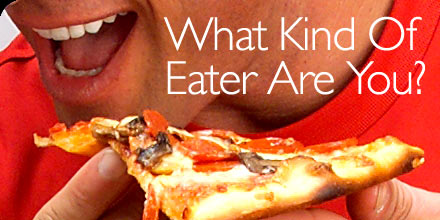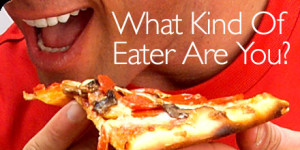 Do any of these situations sound familiar?
Do any of these situations sound familiar?
Your meals usually come out of a carton, a vacuum-packed bag, or over the deli counter.
You almost never eat alone: TV, the Internet, phone, or your favorite magazine is there for nearly every meal.
You find it next to impossible to walk away from free food, even if you’re not hungry – including all-you-can-eat buffets, supermarket sample tables, and those “taste me” booths at flea markets.
You spend more time regretting what you ate than preparing it.
You eat when you’re hungry. Also when you’re sad, mad, hurt, annoyed, irritated – even, sometimes, when you’re overjoyed.
If you find yourself saying “That’s me,” you may have fallen prey to one or more unhealthy eating styles, mealtime or lifestyle habits that can get in the way of weight control.
Sometimes, destructive eating patterns are easy to spot, such as when you turn to food every time you’re facing a problem. But often, the cues are so subtle that these unhealthy habits go unnoticed. Because we have been living with these habits or ‘eating styles’ for so long, we often don’t even realize we are doing them.
Finding Your Eating Style – The Gateway to Change
While eating styles are as individual as we are, some researchers believe they can be grouped into just a handful of behavior patterns.
 Distracted Eaters
Distracted Eaters
Distracted eaters eat while doing something else. This might be watching television, working, reading the paper, or driving a car. To sit down and simply eat is viewed as a waste of time. Distracted eating can lead to chronic overeating and reduces satisfaction.
 Chaotic Eaters
Chaotic Eaters
Chaotic eaters always seem too busy for regular meals. They work hard, volunteer, take part in their kids’ activities. This person seems to thrive on tension. They are gulp ‘n go eaters and rely on food which is quick and convenient, without regard to what is best for their body.
 Because It’s There Eaters
Because It’s There Eaters
Because it’s there eaters eat just because food is there. They are especially vulnerable to candy jars or buffets at social gatherings.
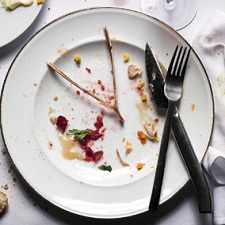 Waste-Not Eaters
Waste-Not Eaters
Waste-not eaters are card-carrying members of the “Clean Plate Club,” influenced by the value of all-you-can-eat buffets and “super-sized” meal deals.
 Emotional Eaters
Emotional Eaters
Emotional eaters use food as comfort. Stress or uncomfortable feelings trigger eating, especially when alone. This person eats in response to an emotion rather than physical hunger.
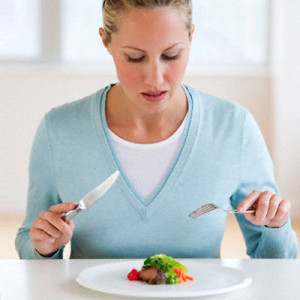 Careful Eaters
Careful Eaters
Careful eaters are motivated by fitness and health. They have good intentions, but feel guilt when they eat food they consider bad. They anguish over each morsel. They may appear to be “perfect” eaters, but they are extreme in their vigilance and
scrutiny.
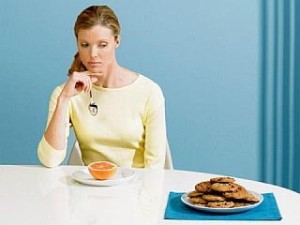 Professional Dieters
Professional Dieters
Professional dieters are always either on a diet, just off a diet, or about to begin a diet. They have tried them all and are motivated by “feeling fat.” They often binge or engage in “Last-Supper” eating (eating one last large meal before the latest diet).
 Intuitive Eaters
Intuitive Eaters
Intuitive eaters eat when they are hungry and stop when they feel satisfied. Young children are generally very good at this kind of eating. We all had that ability at one time. They make food choices without guilt, based on nutritional needs and appetite, and enjoy the pleasures of eating.
We may see ourselves in one or more of these categories. We all eat in response to these different triggers sometimes. Having one or a combination of the first seven eating styles all the time will work against internal signals of hunger and fullness.
The good news is we can relearn how to become an intuitive eater if we have lost it.
If you are not now an intuitive eater, relearning those skills will be a process which requires time and effort. It may mean overcoming years of diet habits and thinking, and sometimes going against the well-meaning advice of people who care about you and who you care about too. In the process your weight may go up or down or stay the same. But freeing yourself from the diet culture will lead you to improved physical and mental health and greater trust in yourself.
Solving the Problem
So what can you do to home in on your bad eating habits – and change them?
First, spend about a week writing down everything in your life that’s connected to food. This is not just about keeping a food diary’ – it’s really a lifestyle diary, one in which you record everything that has to do with eating. This includes not only writing down what you ate, but how much you ate, where you were when you ate it, the time of day it was, why you ate it, if you were alone or with someone else, and, most importantly, what else you were doing while you were eating. It may also be helpful to note how many of your foods were fresh, frozen, processed, fried, steamed, baked, broiled, take-out, or eaten at a restaurant, and how many you ate “out of the box. Eating anything out of a box, without a predetermined portion, can be especially dangerous – before you know it, it’s gone, and you haven’t even tasted the last few hundred calories!
After one to two weeks of journaling your food habits, you should begin to see a pattern emerge. You can not only identify your eating ‘triggers,’ but also the driving force behind why you may be eating more than you need, and even more than you realize.
Your Eating Style
Once you know what your eating style is you can take steps to compensate. If you know, for example, that an all-you-can-eat buffet means you are going to go eat all that you could possibly eat and get your moneys worth, go in prepared: Put a time limit on how long you will stay, and on how many items you will try. Walk the whole buffet first and determine what few items you really want and which ones are really just fillers. Select only the few that you really want and don’t give into trying everything even if is just a dab of it. All those dabs of food add up to big calories. And may leave you feeling like you only had a little bit of each when you actually had way too much.
If noshing and nibbling is the only way you can deal with stress, then nosh and nibble on healthy, low-calorie foods. Find new ways to cope with your stress that does not include self comforting with food. Food is nourishment not therapy.
Moreover, if you try to make eating a conscious experience that touches all your senses, you’re less likely to overeat. And even if you do, you’ll be less likely to punish yourself for it afterward. When you are aware of what you eat, and you eat it consciously, at least you have enjoyed it – as compared to eating it unconsciously and not even remembering what it tasted like.
Confront your food failing – forgive yourself – and transform!”

